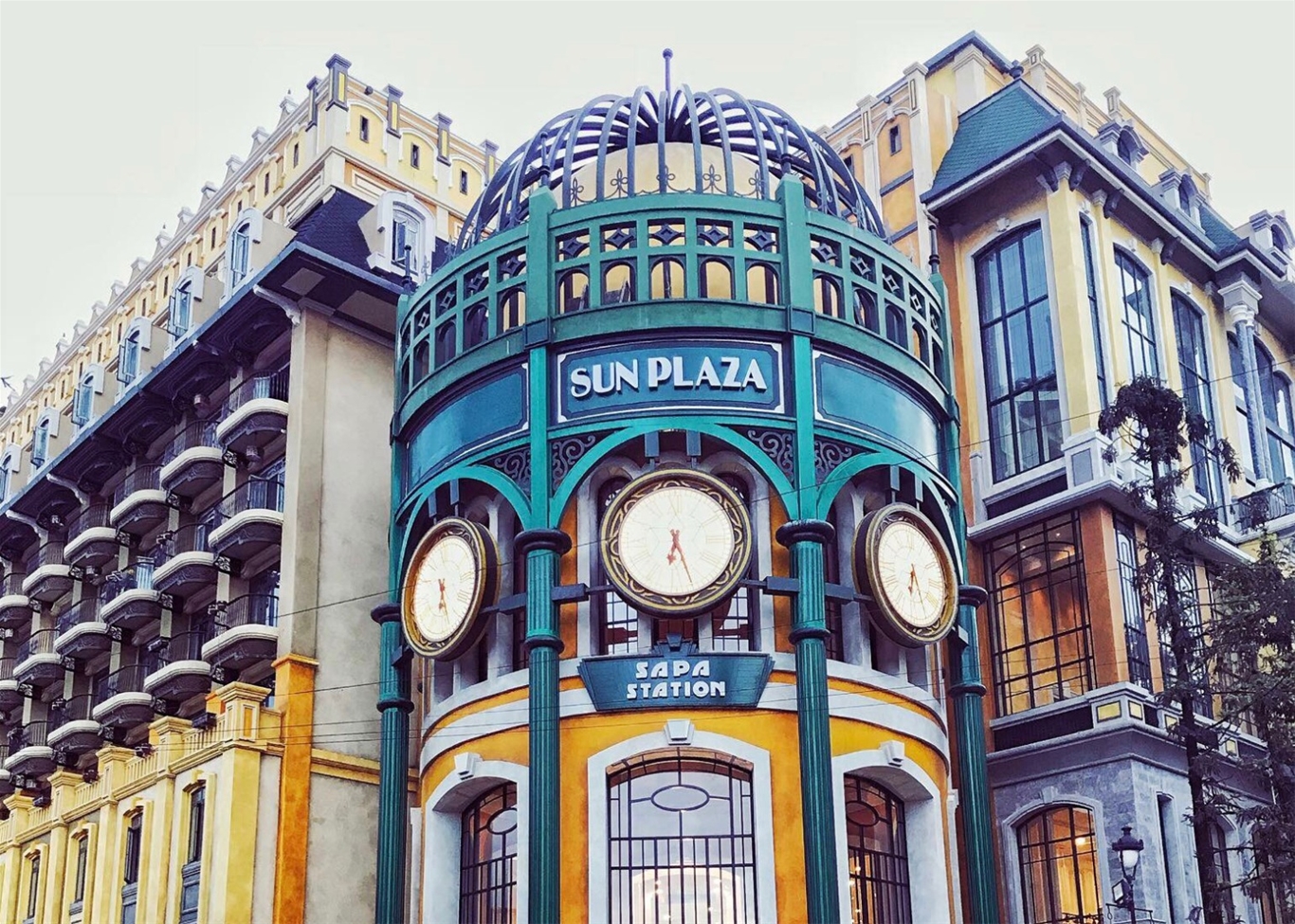
INDOCHINE STYLE ARCHITECTURAL FEATURES IN VIETNAM
Indochine style of architecture in Vietnam was formed in a relatively short period. It started from about the late 18th to mid-20th centuries. It was around this time that the French Empire carried out the colonization of colonial countries in Indochine. But only a large number of Indochine-style structures were built and left their mark until now. Some typical projects such as Hanoi Opera House, Ho Chi Minh City Post Office Ho Chi Minh City. Vietnam History Museum, Fine Arts Museum…
Indochine style in Vietnam
Mục lục
Nowadays, the Indochine style is still influential and is a popular style in Vietnam. Take model 2 in the top 10 most beautiful Indochine-style hotels in Vietnam: HOTEL DE LA COUPOLE SA PA and MARRIOTT EMERALD BAY PHU QUOC for analysis. V.SCALE invites you to learn about the characteristics of Indochine-style architecture in Vietnam below.

Hotel de la Coupole – the iconic hotel for Indochine-style architecture in Vietnam (Image source: Collectibles)
The architectural form of Indochine-style buildings in Vietnam is handled to create a pose, lines suitable. And it’s really close to Vietnamese architecture.
Organize space
The space in Indochine Style design focuses on dividing by usability. According to French-style architecture, the space organization is usually posted on one axis. And taking the lobby as the center.
Organize the Hotel de la Coupole space with the front of the reception hall and function rooms (dining room, spa… ). The rest is a room along 2 buildings. (Image source: Collection)


Corridor
The corridor is a buffer space that creates depth for Indochine architecture. Which is the main moving axis. Functional spaces mostly return to the corridor axis for cool.
The reasonable corridor design helps to create air ducts throughout the building. Solving the problem of ventilation, heat resistance, cooling. And moisture drainage for the building. Especially with the works of tropical humid monsoon climate as in Vietnam.
When open, the corridor helps to direct sunlight and rainwater into the rooms.

Hotel de la Coupole’s 2 sun-drenched corridors. (Image source: Collection)
Learn more about Indochine Style
Roof
Tile roofs are used for Indochina-style architecture due to the influence of traditional indigenous tile roofs. The top of the roof has roofs, the corners of the roof are slightly raised and ended. By the details of carving the head of the day.
The roof slope is 60% for rapid drainage. Wooden roof support console system. Racing roofs and anti-sneezing roofs combined with consoles are influenced by French architecture. Used for roofing including tile roofs such as comedy nose tile (dragon scale tile), pipe tile. Or glass tile (typical Indochinese style architecture in Hoi An, Hue).

Marriott Emerald Bay Phu Quoc with the architectural design using a steep tile roof. (Image source: Collection)

Wooden roof support console system. (Image source: Collection)
Walls
The walls of Indochine buildings are usually about 40cm thick, have 2 layers to prevent heat in summer and cold in winter. Walls built of brick, lime mortar, and water paint outside. In the Central region, due to the influence of Champa culture, many places use baked bricks to build walls. Baked bricks are made mixed with lime mortar and sand. Or lime with molasses of cane sugar.
Door system
The door is the main system that takes wind and natural light for the building. Indochine door system usually has a 2-layer structure, the outer layer is a leaf door for wind. The inside layer is usually glass doors, wood blue, or a convenient for getting light. With modern buildings today, the internal layer is usually glass to use air conditioning. The outer layer is still a book to retain the characteristic elements of Indochine architecture.

Decorate the front
Indochine-style building stand is symmetrical in one axis, with simple shapes. The decorative motifs of the front are usually Asian. Trim and octagonal letters are very popular. Especially in the architecture of ancient Vietnamese pagodas.
In addition, the building front often uses green ceramics for decoration. Floating motifs, cones, reliefs, railings… They are characteristic of Indochine Style in Hoi An and some southern and western regions.
Current buildings, decorative fae with simple stylized traditional line lines.
See also: Villa Ecopark Indochine Style Design


The end
Indochine-style buildings have always retained their beauty and value over a long time. As compared to other Vietnam-style buildings. Not only sending indigenous culture in shape but overall design… Indochine Style interior is also a journey to find long-term, timeless values.
See also: Factors to note to design Indochine Style interiors per
——
If you want to consult with an architect/interior designer, please contact V.SCALE today:
Hotline: 070.7075.007
Email: neoclassic.arc@gmail.com
Website:
Address:
Hanoi Office: No. 6, Dang Van Van Street, Dong Da District, Hanoi
Ho Chi Minh City Office HCM: No. 6, Street 31B – Zone C, P. An Phu, District 2, HCMC Hcm

0 comments